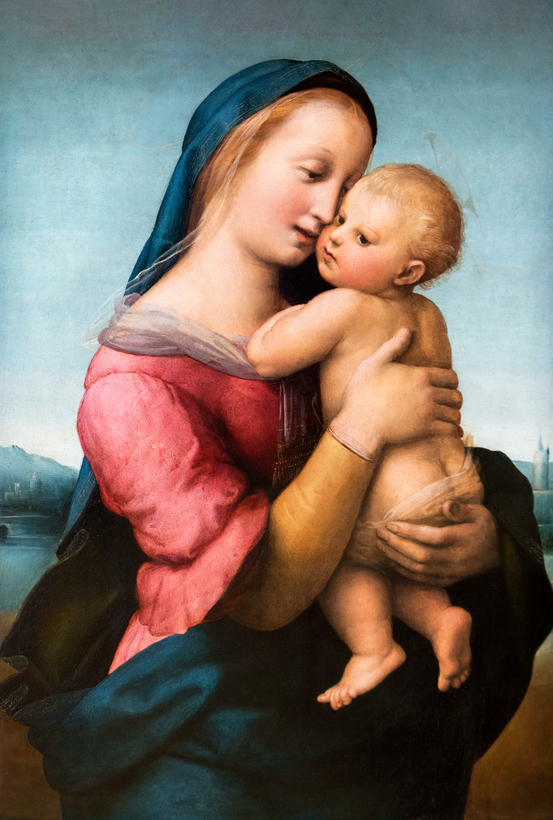Of the three great High Renaissance artists, Michelangelo and Leonardo are still household names, available models of artistic genius. Raphael, who died on April 6, 1520, at the age of 37, is only vaguely known to those who aren’t committed fans of Renaissance art. This past spring, the 500th anniversary of his death brought a series of exhibitions across Europe and the U.S., the largest of which opened in early March in Rome, where Raphael spent most of his working years as artist and architect to the Popes and all-around cultural star. The celebrations, conferences, and shows of 2020, placed on hold by the coronavirus, are now coming back to life. But can they bring Raphael back into popular consciousness?
It was the other way around for most of the last 500 years. Leonardo, whose paintings were held mostly in princely collections and whose writings were known only to experts, was a shadowy figure, and Michelangelo remained a titan of the past, difficult to hold up as a model for anyone who came after him. By contrast, Raphael was a time traveler, celebrated for centuries as a model of perfect painting and a summa of the best that classical art had to teach. By the 19th century, Raphael’s Madonnas had fully pervaded popular culture. They were simply what Madonnas should look like, and were reproduced and riffed on in countless illustrations, cards, prints, and paintings ranging from academic to schlocky.
As with Christ, there was the time before Raphael and the time after him. The Pre-Raphaelites and other 19th-century revivalists aimed to bring art back to an earlier state, before it became worldly, academic, self-conscious—in short, modern. Whether Raphael’s art itself belonged to one side or the other—an embodiment of spiritual truth or a mellifluous fiction—remained a matter of debate.
It was the other way around for most of the last 500 years.
The Pre-Raphaelites took their cue from the English art critic John Ruskin, who pointed a finger at Raphael’s frescoes in the Stanza della Segnatura (where we see the young Raphael looking out at us from the School of Athens), writing, “From that spot, and from that hour, the intellect and the art of Italy date their degradation.” If Ruskin couldn’t accept that Raphael’s art had placed the truths of Christian faith on the same plane as the achievements of pagan poetry and philosophy, others, such as the painter Ingres and the writer Walter Pater, saw in Raphael’s work a perfect balance of classical beauty and Christian piety. The modernist Ezra Pound observed that a once radiant art had become meaty and unresponsive “somewhere about 1527,” shifting the blame to Raphael’s pupils, and urged a new scientific age to bring art back to energetic and interactive life.
Over the last century, Raphael has ceased to be a touchstone of art and a pivot of history. Relieved of these cultural burdens, perhaps Raphael can speak in new ways to a new century. Unlike Leonardo and Michelangelo, Raphael ran a high-functioning studio staffed by pupils with diversified talents, allowing him to generate a corporate brand that conquered Europe, and in fact continued functioning after his death. He had the mysterious ability to channel the highest of high culture into images with mass appeal. Unlike Leonardo and Michelangelo, he understood the power of new media (printed images on paper) to reproduce his art and bring it into people’s homes.
Raphael made art at the leading edge of the latest innovations, yet somehow unfixed in time. Before he was 30, he had taught the most powerful older men of Europe a new artistic language, convincing them that it was theirs. A generation younger than Columbus, he saw the world being reshaped, and responded with an art that envisioned earth’s place in the cosmos from multiple points of view.


 Discover
Discover